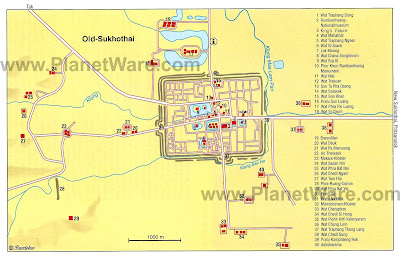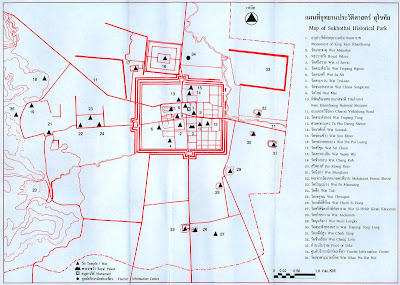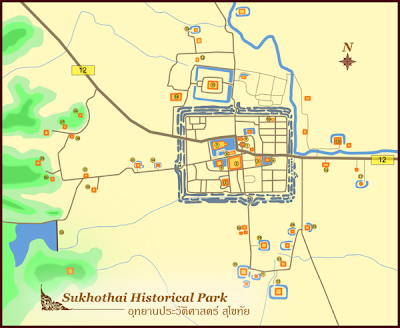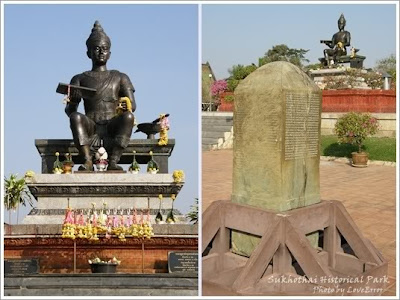


Tambon Ban Tuek Community of Amphoe Si Satchanalai. This is a small and peaceful community filled with trees, paddy fields, and scenic mountain ranges, while tourists can enjoy the traditional life of fruit growers. Different types of fruits grown along the hilly terrain include longkong, langsat, mangosteen, durian, banana, pomelo, rambeh, and rambutan.
Eco & Soft Adventure Tourism
Cycling Route: The Old Town of Sukhothai Trips within the Sukhothai Historical Park are also made by personal or rental bikes.
Spa
As spa is very famous through out the country, even Sukhothai is not left behind. There is the well-known Ananda Spa at Ananda Museum Gallery Hotel in Sukhothai.



Sukhothai province is most famous for its historical city of Sukhothai, the first capital of Siam, founded by King Ramkhamhaeng. The province’s temples and monuments have been restored well and Sukhothai Historical Park – a place with numerous sites of historical interest – has been made into a UNESCO World Heritage Site. Other interesting places include Ramkhamhaeng National Museum, Ramkhamhaeng National Park, Sri Satchanalai National Park, and The Royal Palace and Wat Mahathat.

Roads

The provincial seal shows King Ramkhamhaeng the Great sitting on the Managkhasila Asana throne. Under King Ramkhamhaeng the kingdom of Sukhothai flourished the most.
The provincial slogan is Source of national heritage, the Thai alphabets, the best Loy Krathong celebrations, firm foundation of Buddhism, the fine Teen Jok cloth, ancient chinaware, holy Pho Khun Ramkhamhaeng’s mother, dawn of happiness.


Sukhothai is located in the valley of the Yom River on the lower edge of the northern region, 427 kilometres north of Bangkok, and covers some 6,596 square kilometres.

Sukhothai (Thai: สุโขทัย) is one of the northern provinces (changwat) of Thailand. Neighboring provinces are Phrae, Uttaradit, Phitsanulok, Kamphaeng Phet, Tak, and Lampang. Sukhothai can be translated as Dawn of Happiness.